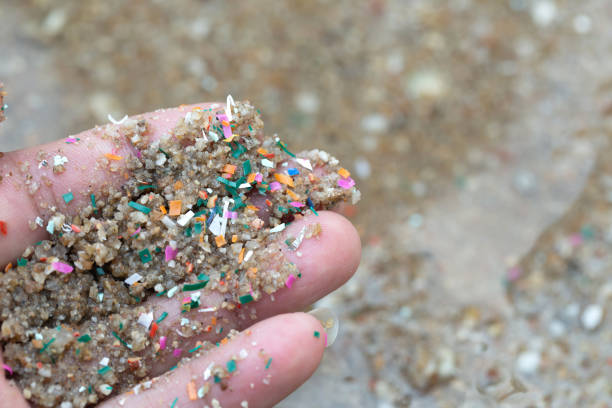Microplastics are found everywhere but what are the effects that it has on our environment and the human body itself? Plastics make our lives easier, but if they are not disposed of or recycled in the correct way, they slowly break down into smaller pieces that become microplastics.
What are microplastics?
Microplastics are small plastic pieces usually smaller than 5 millimeters and there are concerns because of the growing presence in the environment and the impact on ecosystems and human health. These pieces come from two main sources: the first source comes from cosmetics like microbeads and the second source comes from the breakdown of larger plastic waste.
The impact on the environment and health
As microplastics do not biodegrade, they can be found in animals, fish and shellfish. This ultimately means that humans also consume microplastics through the food that they eat. Microplastics have been found in marine, freshwater and terrestrial ecosystems as well as in food and drinking water. On land, they disturb soil ecosystems which affects organisms like earthworms and reduce the fertility of the soil. They also act as toxic waste and as carriers for germs which increase their negative effect on the environment. For instance, animals often mistake microplastics for food. Once animals have eaten it, the particles can cause physical damage, reduce the amount of nutrition animals get and in this way are introduced toxic chemicals into their bodies.
The impact of human health
While scientists know that plastics are present in our bodies, their impact on health is not yet clear.
The exposure to microplastics in humans can lead to serious health issues, like different types of cancers, respiratory problems and inflammatory bowel disease. Microplastics can also damage human cells and plastic exposure may affect future generations before they are born.Microplastics can accumulate in the liver, leading to inflammation. One of the best things you can do for microplastic detox is to support healthy liver function. Hydrate well, eat plenty of fibrous foods, and avoid processed foods. You might also consider taking liposomal glutathione.
What are nanoplastics?
Nanoplastics are smaller than microplastics. They can be a fraction of the width of a human hair, and most of those were found in brains. Nanoplastics can penetrate cells, disrupting cellular functions and potentially leading to cell death.
The study
The recent study published in Nature Medicine analyzed 52 samples of the human brain (particularly the frontal cortex), from autopsies conducted in 2016 and 2024, revealing that brain tissues contain higher proportions of polyethylene compared to the quantity of plastics found in the liver or kidney. This study raises questions about the possible health consequences of plastic exposure. Another notable finding is that MNP levels were three to five times higher in the brains of 12 people diagnosed with dementia. The researchers clarify that this does not necessarily mean that MNPs cause dementia, but it does show an association that should be studied further.
By Elda Russo
